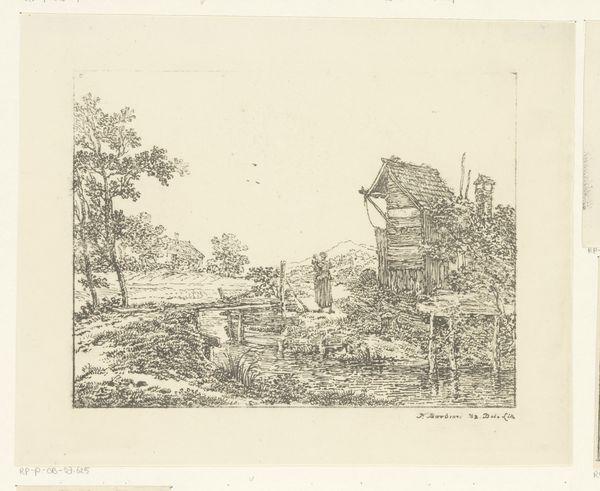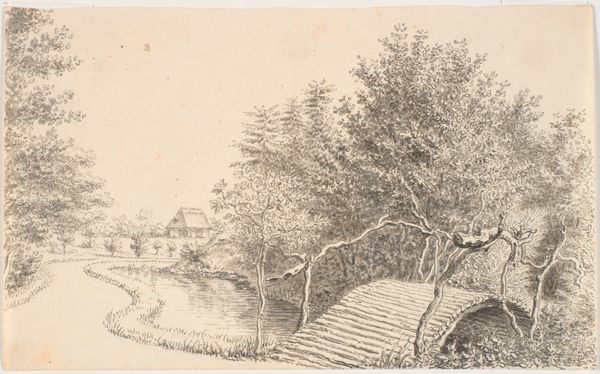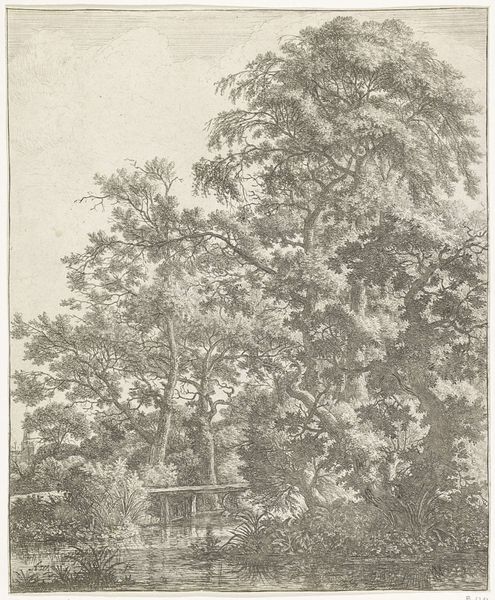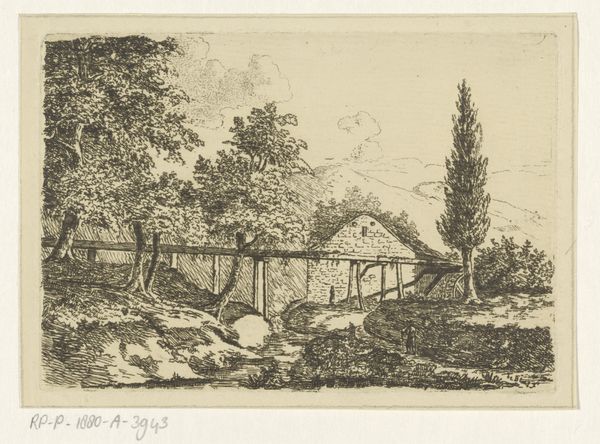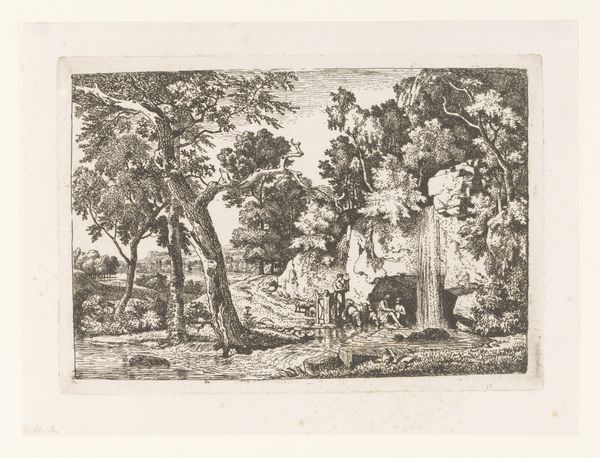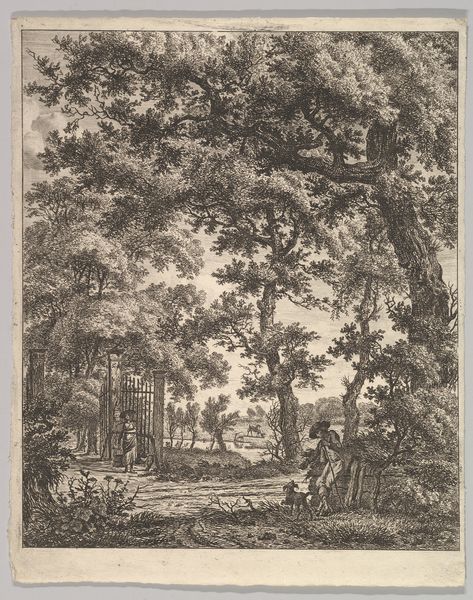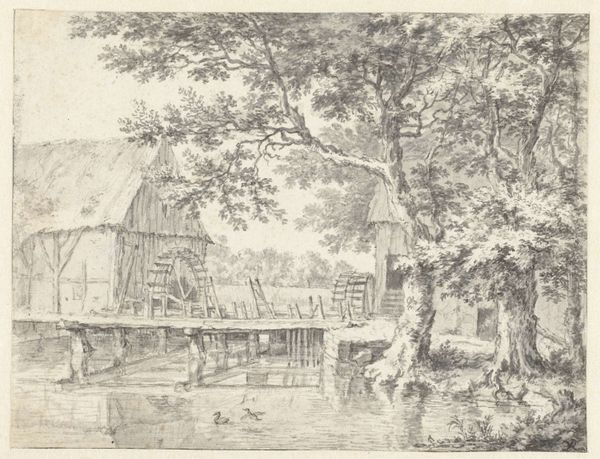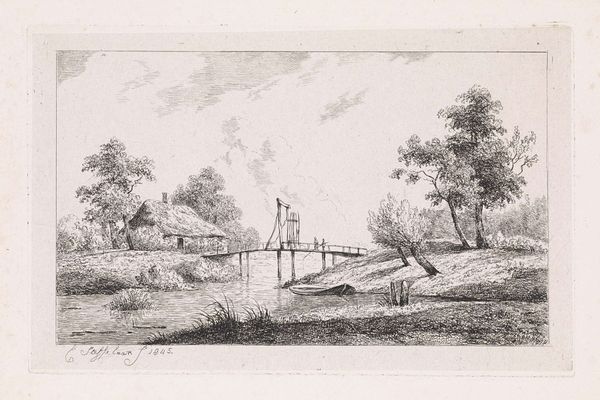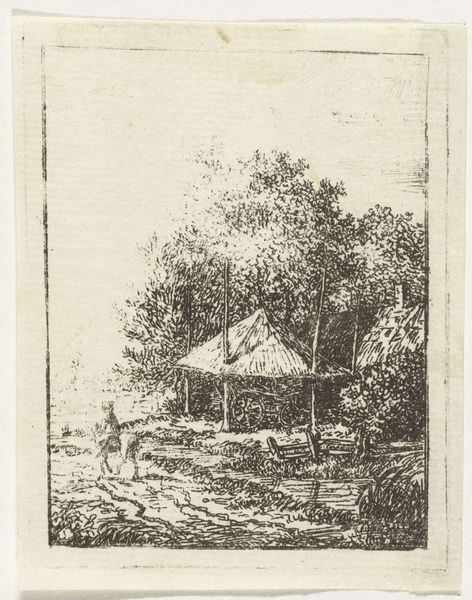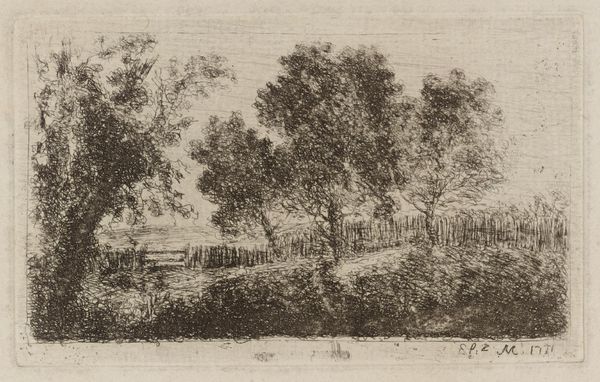
etching
#
etching
#
landscape
#
etching
#
realism
Dimensions: height 123 mm, width 98 mm
Copyright: Rijks Museum: Open Domain
Curator: It’s a quiet, reflective scene isn't it? Rather bucolic. Editor: Absolutely. There is an undeniable peacefulness in it, a snapshot of rural life seemingly untouched by grand narratives. I find the use of hatching creates such wonderful shadows that convey serenity. Curator: Let’s give some context. What we're seeing is Johannes Pieter van Wisselingh’s “Landscape with Two Fishermen near a House," dating from around 1860. It’s an etching. Editor: Thank you. In many ways, this echoes earlier landscape traditions in the Netherlands, right? The seemingly simple life portrayed could, from a critical perspective, be understood as either the freedom of the land or a quiet desperation from which its people couldn't escape. Curator: Possibly. Or the artist is playing with a yearning for simpler times in the face of early industrialization, an expression of longing and escape embedded in an everyday scene. The small home looming is fascinating though—isolated and somewhat unreachable. Editor: Precisely. Note that its positioning, almost floating within the landscape, could reflect concepts of home and belonging – or lack thereof – in times of dramatic shifts in society. The very nature of such small-scale living contains historical realities. It would be good to learn how farmers of that region saw themselves in the industrialization and urbanization dynamic of that time. Curator: Interesting. The two figures are at peace along the shore. Editor: The etched lines really add to that overall sensation. See the soft blending near the shoreline with delicate water reflections? There is so much complexity communicated through them! Curator: Agreed. Wisselingh uses etching to bring this almost meditative stillness, even though he lived in such an eventful era for Dutch and global society. I wonder about the viewers’ response. Do you think the work was always seen with this reflective lens? Editor: I don't think we can ever fully remove ourselves from the layers of historical experience we apply when looking at something that happened so long ago. To attempt this may do disservice to our current perspectives on such life then and its many complexities! Curator: Thank you. Yes, the weight of looking, with all of its impositions! Editor: Indeed.
Comments
No comments
Be the first to comment and join the conversation on the ultimate creative platform.

